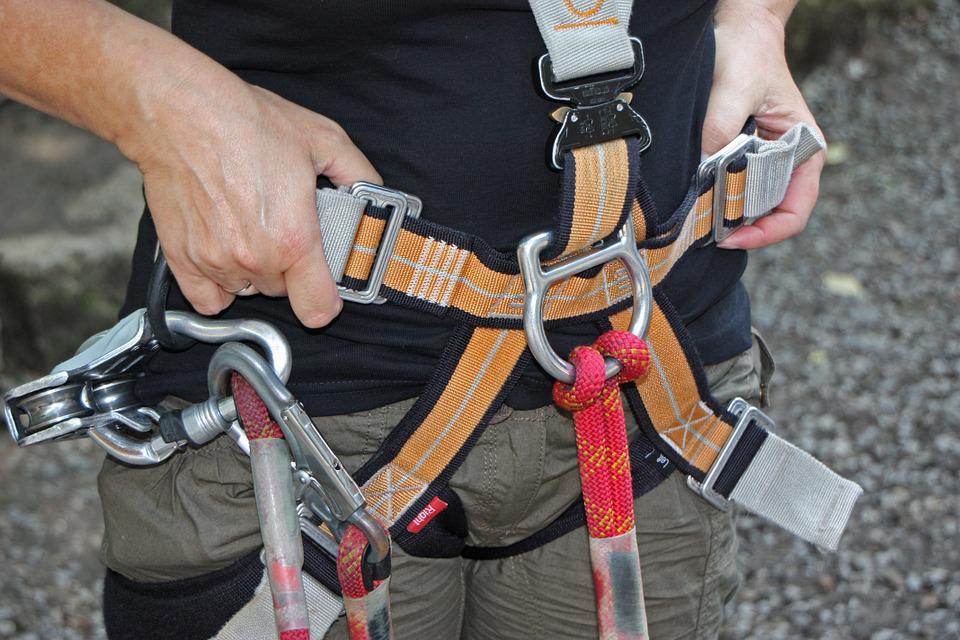
If you've ever worked at height before, you'll know that safety harnesses are a very important piece of safety equipment - but how do they actually work? What's the science behind safety harnesses and how do they keep you safe?
History of height safety
Before we jump into the technical reasons why a safety harness can save your life, let's take a look at some of the PPE that came before it to see what it was like & why it's progressed on to the safety harnesses we see today.
Those of you who were working in the 70s, 80s and 90s will be aware that fall protection equipment wasn't what it is today. In fact, the best fall protection on the market at the time was a body belt that would attach you to the telegraph pole (or wherever you were working) by your waist.
One of the major flaws of these body belts was their inability to distribute force evenly across your body. This often meant that people who wore them for long periods, or who experienced a fall from height while wearing them, would experience severe lower back problems. There were even some reports of irreversible spinal cord injuries. Ouch!
A better solution was needed
After a certain amount of height-related injuries, people started to realise that a better fall protection solution was needed. We couldn't simply strap ourselves to walls, telegraph poles and other ridiculously tall objects by our waists and expect everything to be fine.
When all things were considered, height safety specialists were able to identify the key things that fall protection needed to do in order to keep us safe and comfortable while working at height. These are:
- Distributing force evenly across the body
- Keeping us upright
- Being adjustable to fit the user properly
So how does a safety harness work to do all of these things? Let's find out.
Distributing force evenly across the body
When wearing a traditional body belt around the waist, a lot of the force of a fall was felt around the stomach. However, when wearing a safety harness, the straps and buckles help to distribute the force more evenly across the body. This means that bigger, stronger areas of the body (such as the chest, thighs and shoulders) take the brunt of the force.
While this can still be uncomfortable at times - especially if you fall from a great height - it's far less likely to result in the types of injuries we used to see with body belts.
Keeping us upright
Again, the body belts of old did not do a very good job of keeping us upright in the event of a fall. This meant that additional injuries, such as a bumped head or a bruised leg were also a risk.
Thankfully, modern safety harnesses are designed to keep the spine vertical, which is the best possible position for it to be in in the event of a fall. A vertical position will also lessen the chances of other fall-related injuries.
One of the reasons you stay upright during a fall is the attachment points on the harness. These attachment points give the user greater flexibility when attaching themselves to the work surface. When paired with a suitable fall arrest lanyard, you should stay in a comfortable upright position at all times.
Being adjustable to fit the user properly
If a safety harness will only work if it fits the user properly. That means it needs to have a snug fit without being overly tight. That's why it's really important that you choose a safety harness that fits your body's size and shape. If a safety harness fits the wearer poorly, there is a much greater chance of injury.
Here at Safety Harness Direct, we offer a huge selection of safety harnesses that are designed to fit people of all shapes and sizes. You can shop all of our safety harnesses here:
Shop Safety Harnesses >

